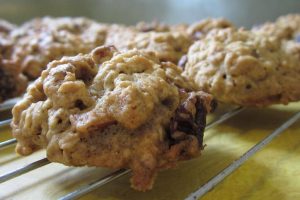What can I substitute for oatmeal in baking?
Help! I need a substitute for oatmeal in baking, what can I use? When you’re baking and looking for an alternative for oatmeal, there are a few options to choose from.
The use of oatmeal in baking has a long and rich history, dating back centuries. In fact there is evidence that oats were grown, and eaten, by ancient civilizations such as the Egyptians and the Greeks. However, it is believed that oats were most likely introduced into baked goods in Europe during the medieval period.
Oats were widely available and relatively inexpensive, making them a staple ingredient for many households. This was especially noted in poorer regions where wheat was less abundant or more expensive. Oat-based bread and porridge were eaten regularly by the lower classes, as they were considered a hearty, nutritional food.
So when you run out of oatmeal, don’t panic, and have a look at these great options.
Try using: Quinoa Flakes, Rice Flakes, Buckwheat Flakes, Almond Meal or Flour, Shredded Coconut, Ground Flaxseeds, or Chia Seeds.
Play around with these ingredients and see which one you like the best. Just remember you might need to adjust the other ingredients to end up with the desired texture and flavor you are looking for.
What can I substitute for oatmeal in baking
Here are some of the best ingredients to substitute the flavor and role that oatmeal provides in your recipes.
- Quinoa Flakes
- Rice Flakes
- Buckwheat Flakes
- Almond Meal or Flour
- Shredded Coconut
- Ground Flaxseeds
- Chia Seeds
Oatmeal substitutes in baking
Quinoa Flakes
Quinoa flakes are simply made from whole quinoa grains that have been steamed, rolled, and flattened into thin flakes. They look similar in appearance to traditional rolled oats but come from the quinoa plant. Known for its high protein content, the quinoa plant also has nutritional benefits.
To use quinoa flakes as a substitute for oatmeal in baking, I recommend you use a simple ratio of 1:1. Here’s a few ideas how you can use them:
- Cookies: Use quinoa flakes in place of oats in cookie recipes. They will provide a slightly nuttier flavor and a more delicate texture. Keep in mind that quinoa flakes may absorb moisture differently than oats. Therefore you may need to adjust the liquid content of your recipe because of this.
- Granola: You can use quinoa flakes to make homemade granola. Combine them with nuts, seeds, dried fruit, sweetener, and oil, then bake until golden and crispy. You can customize the flavors to your liking, adding spices like cinnamon or vanilla extract for extra flavor.
- Muffins and Bars: Substitute quinoa flakes for oats in muffin and bar recipes. They will add a hearty texture and a nutritional boost to your baked goods. Again, be mindful of any adjustments needed in the recipe, particularly in terms of liquid content.
- Bread and Pancakes: Add quinoa flakes to bread dough or pancake batter to enhance the texture and nutritional profile. They work well in recipes that call for oats, providing a similar chewy texture and slightly nutty flavor.
- Crumbles and Crisps: Use quinoa flakes in fruit crumbles and crisps as a topping. Mix them with flour, sweetener, and butter or oil, then sprinkle over your fruit filling before baking until golden and bubbly.
When substituting quinoa flakes for oats, keep in mind that they may have a slightly different taste and texture. If you can, try and experiment with small batches first to see how they affect your baked goods.
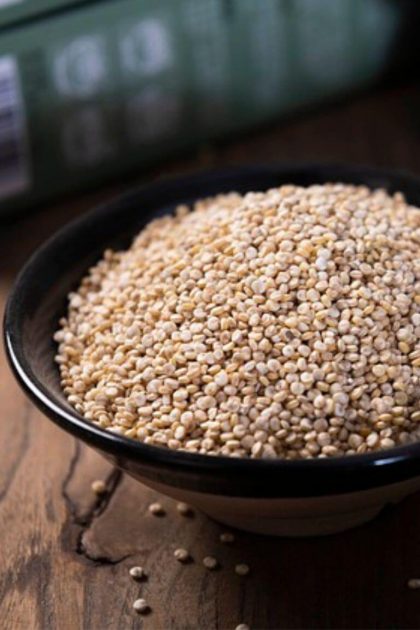
Rice Flakes
Rice flakes, also known as poha or flattened rice, are thin, flattened grains of rice. They are commonly used in Indian cuisine, particularly in breakfast dishes and snacks. To use rice flakes as a substitute for oatmeal in baking, follow these steps:
- Understanding Texture: Rice flakes have a lighter and thinner texture compared to oats. They are delicate and can become soft when soaked or cooked. This texture difference may affect the final outcome of your baked goods, so keep this in mind when substituting them for oats.
- Direct Substitution: In most recipes, you can substitute rice flakes for oats in a 1:1 ratio. For example, if a recipe calls for 1 cup of oats, you can use 1 cup of rice flakes instead. However, be aware that the texture and flavor may vary slightly.
- Adjusting Liquid Content: Rice flakes may absorb less liquid compared to oats, so you may need to adjust the amount of liquid in your recipe. If your batter or dough seems too dry after adding the rice flakes, you can gradually add more liquid until you reach the desired consistency.
- Recipes: You can use rice flakes in a variety of baking recipes, including cookies, muffins, bars, and granola. They add a subtle sweetness and a delicate texture to baked goods. Feel free to experiment with different recipes to find the ones that work best for your preferences.
- Preparation: Before using rice flakes in baking, you can soften them by soaking them in water or milk for a few minutes. This will help them become more pliable and easier to incorporate into your recipes.
- Flavor Profile: Keep in mind that rice flakes have a milder flavor compared to oats. They will not give you the same nutty taste that oats do. This means the final flavor of your baked goods may be slightly different.
Overall, rice flakes can be a versatile and nutritious substitute for oatmeal in baking.
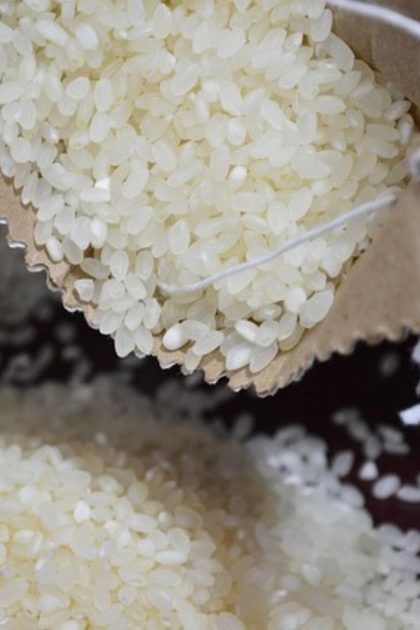
Buckwheat Flakes
Buckwheat flakes are made from whole buckwheat groats that have been steamed, rolled, and flattened into thin flakes. Despite the name, buckwheat is not related to wheat and is naturally gluten-free. Buckwheat flakes offer a nutty flavor and hearty texture, making them a great substitute for oatmeal in baking. Here’s how you can use them:
- Direct Substitution: You can typically substitute buckwheat flakes for oats in a 1:1 ratio in most baking recipes. For example, if a recipe calls for 1 cup of oats, you can use 1 cup of buckwheat flakes instead.
- Adjusting Texture: Buckwheat flakes have a slightly heartier texture compared to oats. This can add a nice chewiness to your baked goods. However, if you prefer a finer texture, you can pulse the buckwheat flakes in a food processor for a few seconds to break them down slightly.
- Flavor Enhancement: Buckwheat flakes have a distinct nutty flavor that adds depth to baked goods. They work particularly well in recipes like cookies, muffins, and bars, where their flavor can complement other ingredients. Think of ingredients like nuts, chocolate, or even dried fruit.
- Nutritional Boost: Buckwheat is rich in nutrients like fiber, protein, and minerals, making buckwheat flakes a nutritious addition to your baked goods. They can help add an extra dose of nutrients to your recipes while providing a satisfying texture.
- Gluten-Free Option: Buckwheat is naturally gluten-free, making buckwheat flakes an excellent choice for those with gluten sensitivities or celiac disease. You can use them in gluten-free baking recipes to achieve similar results to traditional oats.
- Experimentation: As with any ingredient substitution, it’s a good idea to experiment with small batches first to see how buckwheat flakes affect the texture and flavor of your baked goods. You may need to adjust other ingredients, such as liquid or sweeteners, to achieve the desired results.
In baking, rice flakes offer a flexible and nutritious option to replace oatmeal.
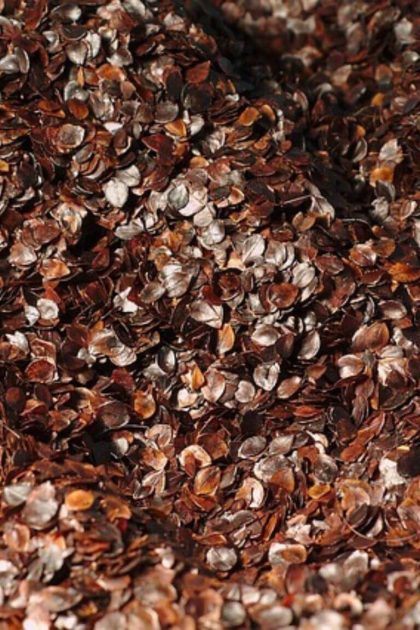
Almond Meal or Almond Flour
Almond meal or almond flour is made from ground almonds with the skins intact, while almond flour is typically made from blanched almonds with the skins removed. Both almond meal and almond flour are gluten-free and offer a slightly sweet, nutty flavor to baked goods. Here’s how you can use them as a substitute for oatmeal in baking:
- Texture and Flavor: Almond meal and almond flour have a finer texture compared to oatmeal, so they will result in a different texture in your baked goods. They also have a distinct nutty flavor that can add depth to your recipes.
- Direct Substitution: You can substitute almond meal or almond flour for oats in certain baking recipes, but it’s important to note that they won’t provide the same texture or structure as oats. For example, you can use almond meal or almond flour in recipes like cookies, bars, and muffins, where oats are used more for flavor and texture rather than structure.
- Adjusting Other Ingredients: Because almond meal and almond flour are more dense and moist than oats, you may need to adjust other ingredients in your recipe to compensate. For example, you may need to reduce the amount of liquid or add additional binding agents like eggs or flaxseed meal to help hold the batter or dough together.
- Gluten-Free Option: Almond meal and almond flour are naturally gluten-free, making them a great option for those with gluten sensitivities or celiac disease. You can use them in gluten-free baking recipes to achieve similar results to traditional oats.
- Experimentation: As with any ingredient substitution, it’s a good idea to experiment with small batches first to see how almond meal or almond flour affect the texture and flavor of your baked goods. You may need to make adjustments to the recipe to achieve the desired results.
Almond meal and almond flour are great substitutes for oatmeal in baking, especially ideal for gluten-free recipes or those craving a nutty essence.Just keep in mind that they will result in a different texture and flavor profile compared to oats.
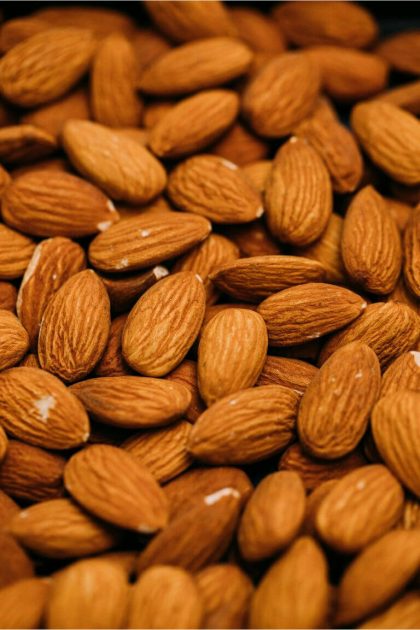
Shredded Coconut
Shredded coconut is made from the flesh of mature coconuts that has been grated or shredded into thin strips. It is commonly used in baking to add texture, flavor, and moisture to various recipes. Here’s how you can use shredded coconut as a substitute for oatmeal in baking:
- Texture and Flavor: Shredded coconut adds a unique texture to baked goods, with a slightly chewy consistency and a sweet, nutty flavor. While it won’t provide the same texture as oats, it can add depth and richness to your recipes.
- Direct Substitution: You can substitute shredded coconut for oats in certain baking recipes, particularly in recipes where you would use oats for texture rather than structure. For example, you can use shredded coconut in cookies, bars, muffins, and granola for added flavor and texture.
- Adjusting Other Ingredients: Because shredded coconut is more moist and dense than oats, you may need to adjust other ingredients in your recipe to compensate. For example, you may need to reduce the amount of liquid or add additional binding agents like eggs or flour to help hold the batter or dough together.
- Varieties: Shredded coconut is available in both sweetened and unsweetened varieties. Depending on your preferences and the recipe you’re making, you can choose the option that best suits your needs. Keep in mind that sweetened shredded coconut will add extra sweetness to your baked goods.
- Toasting: To enhance the flavor and texture of shredded coconut, you can toast it lightly before adding it to your recipes. Simply spread the shredded coconut on a baking sheet and bake in a preheated oven at 325°F (160°C) for 5-10 minutes, stirring occasionally, until golden brown.
- Mix-ins and Toppings: You can use shredded coconut as a mix-in or topping for baked goods like cakes, cupcakes, and bread. It pairs well with other flavors like chocolate, nuts, and dried fruit, adding a tropical twist to your creations.
Overall, shredded coconut will provide a unique texture and flavor profile to your baking that can enhance a variety of recipes.
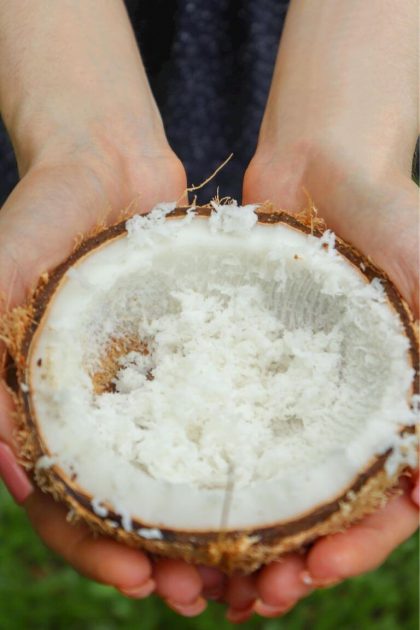
Ground Flaxseeds
Ground flaxseeds are made by finely grinding whole flaxseeds into a powder-like consistency. They are rich in omega-3 fatty acids, fiber, and various nutrients, making them a popular choice for adding nutritional value to baked goods. Here’s how you can use ground flaxseeds as a substitute for oatmeal in baking:
- Binding Agent: You can use ground flaxseeds as a substitute for oats in recipes where you would use oats as a binding agent. To use ground flaxseeds as a binder, mix 1 tablespoon of ground flaxseeds with 3 tablespoons of water and let it sit for a few minutes until it thickens and forms a gel-like consistency. You can now use this mixture to replace one egg in your recipe.
- Nutritional Boost: Ground flaxseeds add a nutty flavor and a nutritional boost to baked goods, thanks to their high fiber and omega-3 content. You can add them directly to the batter or dough in place of oats to increase the nutritional value of your baked goods.
- Texture Enhancement: Ground flaxseeds can also enhance the texture of baked goods, adding moisture and chewiness. They work particularly well in recipes like muffins, bread, and pancakes, where you would use oats for texture and moisture.
- Adjusting Other Ingredients: Because ground flaxseeds absorb moisture, you may need to adjust other ingredients in your recipe when using them as a substitute for oats. For example, you may need to reduce the amount of liquid or increase the amount of flour to achieve the desired consistency in your baked goods.
- Flavor Profile: Ground flaxseeds have a slightly nutty flavor that can complement a variety of baked goods. They pair well with ingredients like nuts, seeds, dried fruit, and spices, adding depth and richness to your recipes.
- Storage: Store ground flaxseeds in an airtight container in the refrigerator or freezer to maintain their freshness and prevent them from going rancid. You should use them within a few months for best results.
Ground flaxseeds are a versatile and nutritious substitute for oatmeal in baking, providing benefits in terms of texture, flavor, and nutritional value.
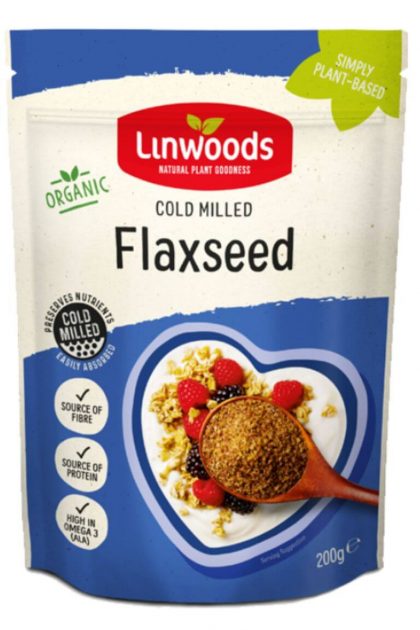
Chia Seeds
Chia seeds are small, nutrient-dense seeds that come from the plant Salvia hispanica, which is native to Central and South America. They are rich in fiber, omega-3 fatty acids, protein, and various vitamins and minerals. Here’s how you can use chia seeds as a substitute for oatmeal in baking:
- Binding Agent: You can use chia seeds as a binding agent in baking, similar to ground flaxseeds. To use chia seeds as a binder, mix 1 tablespoon of chia seeds with 3 tablespoons of water and let it sit for a few minutes until it forms a gel-like consistency. You can use this chia “egg” mix to replace one egg in your recipe.
- Texture Enhancement: Chia seeds can add texture and moisture to baked goods, similar to oats. They absorb liquid and form a gel-like consistency when mixed with water. This helps to keep baked goods moist and tender. You can add whole chia seeds directly to the batter or dough. However, if you prefer you can grind them into a finer texture for a smoother consistency.
- Nutritional Boost: Chia seeds are packed with nutrients, including fiber, protein, and omega-3 fatty acids. Adding chia seeds to your baked goods can increase their nutritional value and provide a variety of health benefits. Chia seeds can benefit both digestion and heart health.
- Flavor Profile: Chia seeds have a mild, nutty flavor that pairs well with a variety of ingredients. They can enhance the flavor of baked goods without overwhelming other flavors. You can use chia seeds in sweet or savory recipes, adding a subtle crunch and nuttiness to your baked goods.
- Mix-ins and Toppings: Use chia seeds as mix-ins, or toppings for baked goods. Sprinkle them on top of muffins, bread, or granola before baking for added texture and visual appeal. You can also mix them into batter or dough along with other ingredients for a nutritious boost.
In baking, chia seeds prove to be a flexible and nourishing replacement for oatmeal. They provide a range of advantages in terms of mouthfeel, taste, and nutritional content.
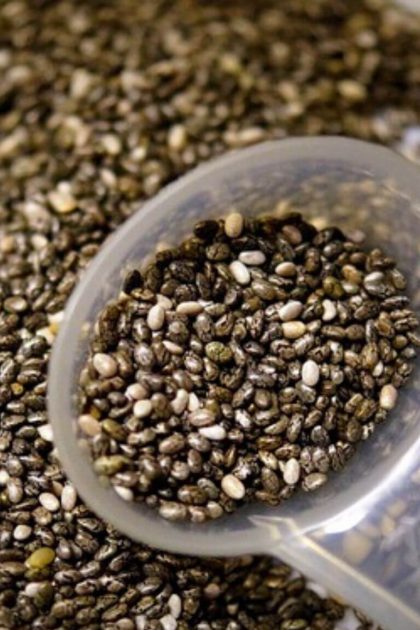
FAQs
What does oatmeal do in baking?
Oatmeal serves several purposes in baking, these include adding texture, moisture, nutrition and flavor. You will be able to enjoy their chewy texture, whilst also benefiting from their nutritional benefits. If you want to add extra fiber, vitamins and minerals then using oatmeal is the perfect solution. Go on ahead, enjoy the mild sweet, nutty taste, of oatmeal in your bakes.
Is oatmeal basically porridge?
Yes, oatmeal is essentially a type of porridge. Porridge is actually a general term for hot cereal made by boiling grains or other starchy ingredients in water or milk until they soften and thicken. Oatmeal however, specifically refers to porridge made from oats, which are rolled, steel-cut, or ground into oat flour. So, oatmeal is a type of porridge made specifically from oats.
Summary for substitute for oatmeal in baking
Okay – that’s you all sorted with suitable substitutes for oatmeal in baking
Here’s a quick summary.
- Quinoa Flakes: These are similar in texture to oats and can be used in a 1:1 ratio in most recipes. They provide a slightly nutty flavor and work well in cookies, bars, and muffins.
- Rice Flakes: Also known as poha or flattened rice, rice flakes can be used as a substitute for oats in baking. They have a mild flavor and a delicate texture, making them suitable for recipes like granola and crisps.
- Buckwheat Flakes: Despite the name, buckwheat is not related to wheat and is gluten-free. Buckwheat flakes are hearty and nutritious, making them a great oatmeal substitute in recipes like pancakes, cookies, and bread.
- Almond Meal or Almond Flour: If you’re looking to make your recipe gluten-free or want to add a nutty flavor, almond meal or flour can be used instead of oats. Keep in mind that almond meal is denser, so you may need to adjust the quantities and other ingredients accordingly.
- Shredded Coconut: Finely shredded coconut can add texture and flavor similar to oats in recipes like cookies, bars, and crusts. It adds a subtle sweetness and works well in both sweet and savory dishes.
- Ground Flaxseeds or Chia Seeds: These seeds can be ground and used as a thickening agent in place of oats. They also add a boost of nutrition with omega-3 fatty acids and fiber. They work particularly well in recipes like energy balls, muffins, and bread.
We have gathered together a lot more facts on ingredients such as herbs, spices, oils, nuts, etc. if you would like to learn some more.
Or if you need to swap out another ingredient have a look at our Substitutes section.
